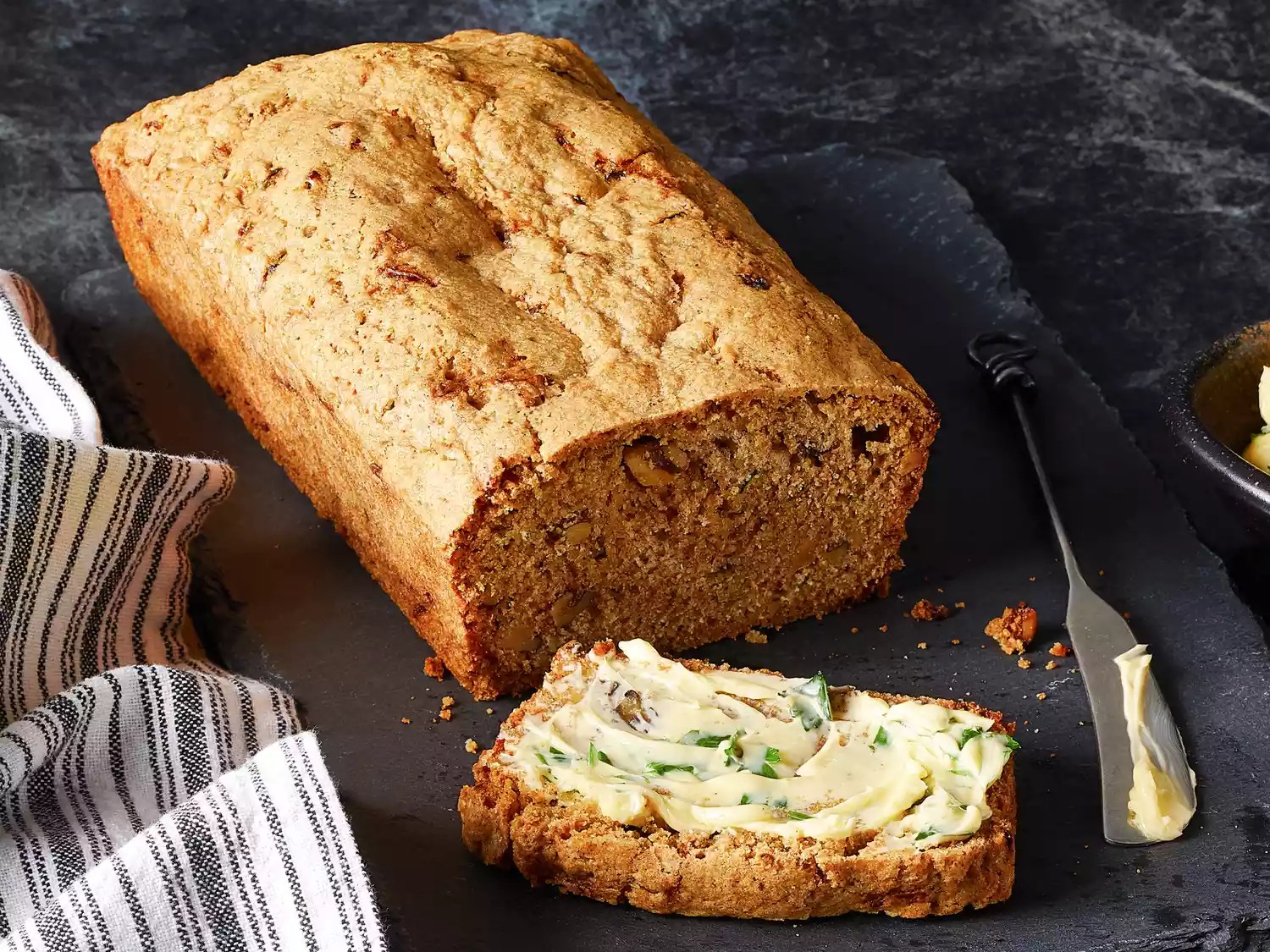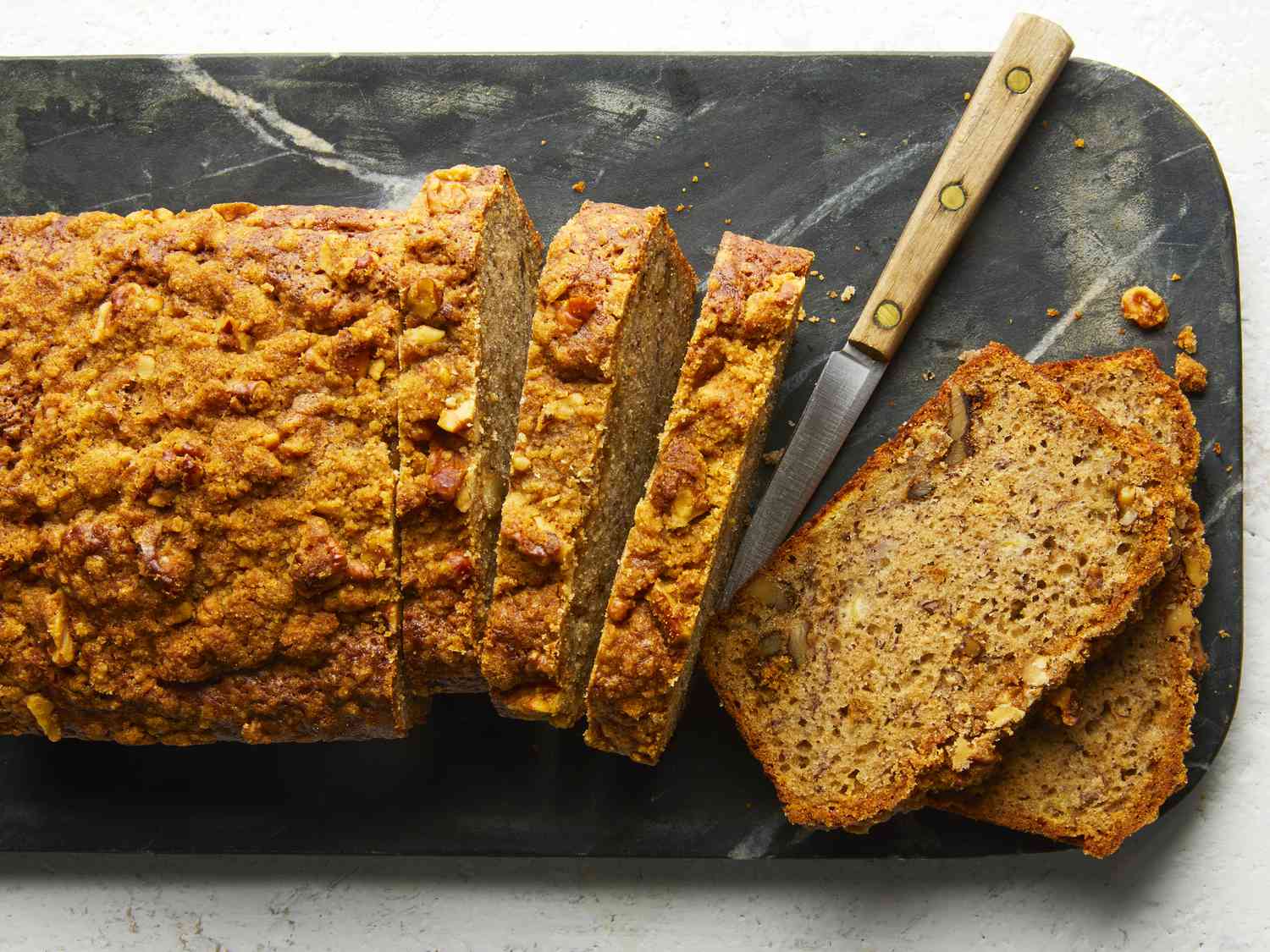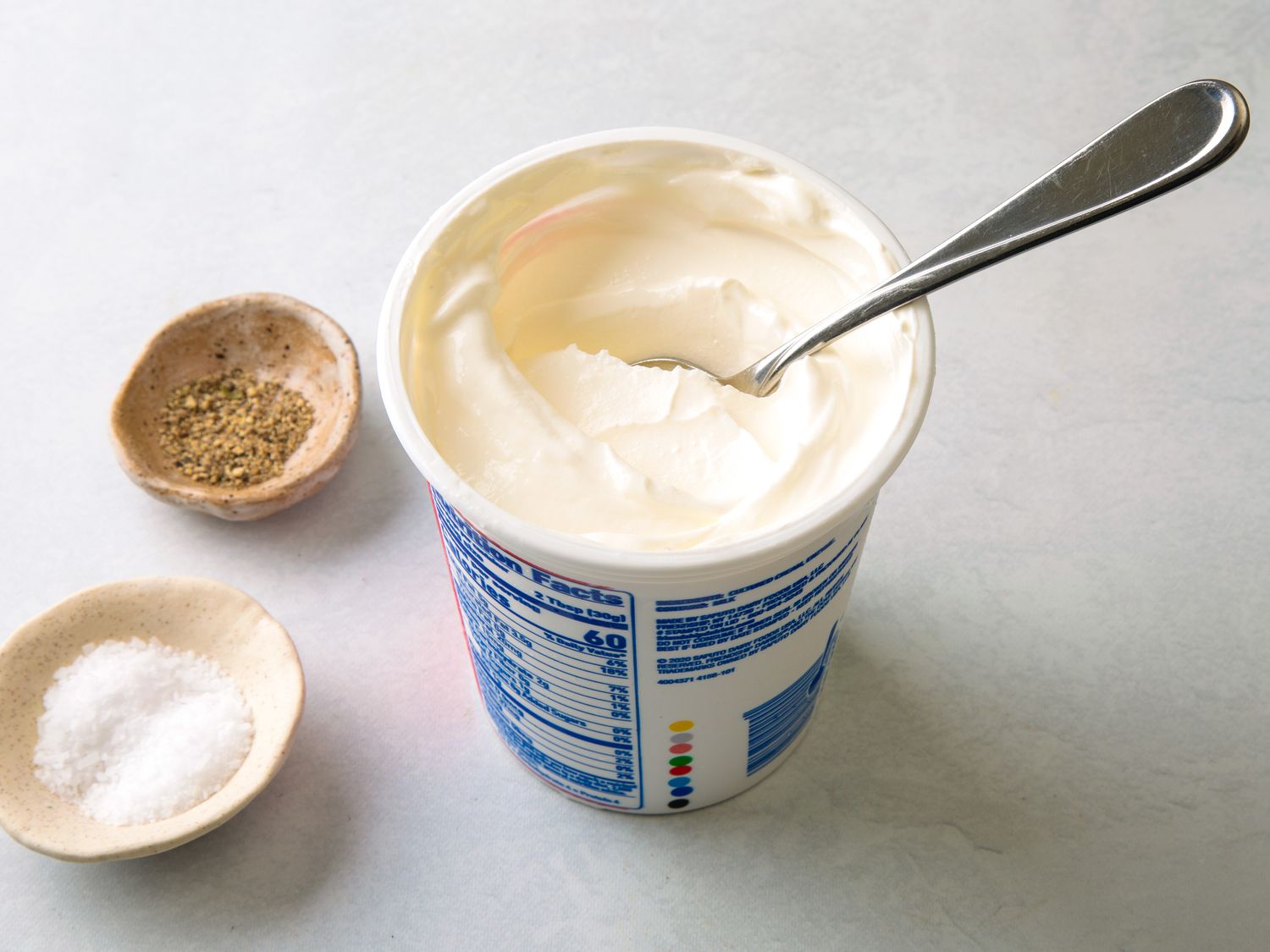A loaf cake is a thing of wonder, and the best versions have a light, tender crumb. No matter what recipe you’re following, though, you might find yourself disappointed to find that your loaf cake isn’t as light as you’d like–a tough chew, even. Here’s the culprit, and here’s the way to avoid it.
Loaf cakes are often quick breads–baked goods that get their rise from chemical leaveners like baking powder instead of yeast. In yeasted bread like a pillowy sandwich bread or crusty baguette, that classic chewy crust comes from kneading the dough to develop the protein, gluten. And that gluten is public enemy number one when it comes to loaf cakes. For that light bite, you want to develop as little gluten as possible with your technique. And it all comes down to mixing.

Dotdash Meredith Food Studios
The Enemy of a Tender Loaf Cake: Overmixing
In recipes for loaf cakes, you may have seen instructions along the lines of “mix just until combined;” this is meant to prevent as little gluten development as possible. Gluten in flour can only be activated when wet, which is why you want to stir the dry ingredients as much as you need but mix them as little as possible once the flour is hydrated.
How best to avoid overmixing? Prepare your wet and dry ingredients separately, for starters. Eggs need a bit of elbow grease to break up and homogenize throughout the batter, and if you do that with the flour in the bowl, you’ll certainly overmix, so add your eggs to your other wet ingredients in a separate bowl. The same goes for salt and baking powder. You want these ingredients thoroughly mixed in, so mix them dry with the flour before adding in the wet ingredients. Yes, this makes more dishes. But really, what’s one more bowl when the reward is buttery soft loaf cake?
Unfortunately, gluten isn’t the only product of overmixing. Some loaf cakes, like pound cakes, call for a step called creaming–beating butter and sugar together to create a whipped and airy mixture. Adequately creamed butter and sugar adds structure that traps air and leads to a lighter cake. But over-creaming the butter and sugar will cause them to begin to separate, leading ultimately to an oil-soaked texture that can even cause your loaf cake to collapse once you pull it out of the oven.
How to avoid over-creaming the butter and sugar? Stay focused! You’re much more likely to overmix if you step away from your stand mixer while it’s creaming the butter and sugar to prepare for the next steps in the recipe–separating eggs, measuring flour, greasing your pan. Take a note from restaurant cooks who operate with mise en place, the French phrase which means “everything in its place.” In other words, get everything ready–measured, separated, greased–before you start. That way, you can keep your eyes on your batter, and avoid overmixing at every step.
That first, light, tender bite of your next loaf cake will be your reward.




